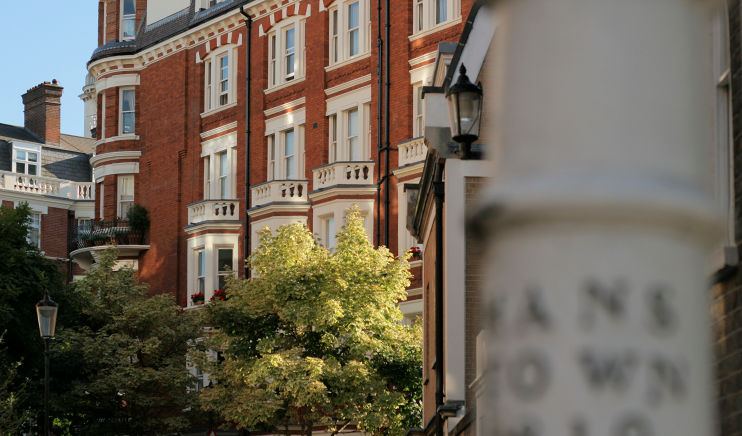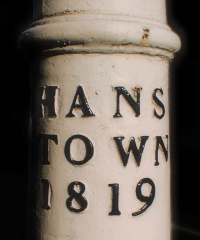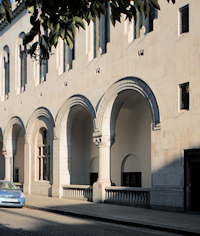Hans Town
Hans Town, Kensington & Chelsea
A grand 18th-century suburb centred on Sloane Street, rebuilt from the 1880s onwards

Sir Hans Sloane was perhaps Chelsea’s greatest benefactor before Roman Abramovich. A president of the Royal Society, Sloane moved to Chelsea in 1742 and subsequently endowed the Physic Garden down by the Thames. His vast scientific and literary collection became the nucleus of the British Museum after his death in 1753.
During the 1770s the outward spread of London led Fulham architect Henry Holland to spot an opportunity south of Knightsbridge. He acquired building rights from the Earl of Cadogan, who had come into possession of the land via his marriage to one of Hans Sloane’s daughters. Spacious three-storey terraces were erected along the west side of Sloane Street and in Hans Place, then around Sloane Square, and finally in Cadogan Place in 1790.
Holland built himself a mansion called Sloane Place (or the Pavilion) in the south-western part of his ‘town’ with grounds landscaped by Capability Brown.

Cadogan Square replaced Sloane Place when R Norman Shaw and other architects were commissioned to reinvigorate Hans Town just a century later, after criticism of the district’s anonymous architectural standards. Each new house was given its own distinctive detailing, further enhancing the prestige of the locality. The Cadogan hotel opened at 75 Sloane Street in 1887.
Pevsner’s London North-West devotes several pages to the architecture of the rebuilt Hans Town, pointing out that: “In few other places in London can the prosperous 1880s be studied more profitably.”
Sloane Square was also progressively renewed, and the Royal Court Theatre opened on its east side in 1888. It later became England’s foremost home for new playwrights.
Several high-class mansion blocks followed – often in Hans Town’s newly prevailing Queen Anne style – such as 9 Wilbraham Place, which was built c.1896 and is visible in the photograph at the top of the page.

Where parts of Hans Town were rebuilt in the 20th century the results were generally less striking, with the honourable exceptions of the very Scandinavian-looking Danish embassy at 55 Sloane Street and Peter Jones on Sloane Square.
The Christian Scientists built a capacious and lavishly furnished church on Sloane Terrace in 1905–7. The building’s architect was Robert Chisholm, whose very original style drew on Byzantine, Romanesque, Indian and Islamic influences. The church closed in 1996. It was subsequently acquired by the Cadogan estate and reopened in 2004 as Cadogan Hall, which stages classical, jazz, folk and world music events, hosts debates and conferences, and serves as the London home of the Royal Philharmonic Orchestra.
Jane Austen stayed with her brother in Hans Place during 1814–15.
Arnold Bennett lived in Cadogan Square from 1921 to 1930.
Postal district: SW1
Population: 8,792 (2011 census, Hans Town ward, which has since been merged with Brompton)
